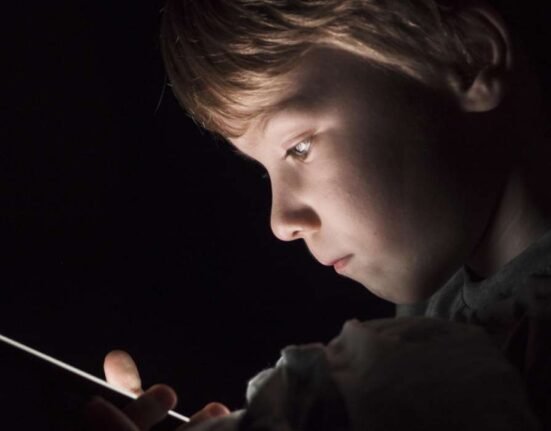Reproductive cloning is defined as the deliberate creation of genetically identical individuals. Each individual duplicate is a copy of the original. Monozygotic (identical) worms are natural clones. In clones, the nucleus which is the part containing the chromosomes, of every cell in their body has the same genetic material. Thus, cells from two clones have the same dna and the same genes in their nuclei.
History Of Cloning
Cloning is the result of intense research into the use of genetic engineering in animal breeding and the treatment of genetic diseases in humans and reproductive organisms. In 1901, the nucleus of a salamander fetal cell was successfully transplanted into an enucleated cell. Between 1940 and 1950, scientists successfully cloned mammalian embryos. Spemann’s hypothesis was proven in 1956, and adult frogs were created in 1962 by removing the nucleus of a tadpole’s intestinal cell and transplanting them into an egg. In 1984, sheep were cloned from embryonic cells, a cow was cloned from embryonic cells from another cow in the same year.
In 1996, the first cloned animal, dolly, was created in Scotland from the mature mammary gland cells of an adult sheep. Dolly’s importance lies in the fact that she was created from differentiated cells of the mammary gland, whereas earlier cloned animals were created from embryonic cells. The birth of the dolly undermined the impossibility of simulation with specific differentiated cells. In the late 2000s, scientists cloned eight of his mammal species. In 2003, American scientists created the first cloned mule. The first dog named Snoopy was cloned in 2005. Iranian scientists successfully cloned several sheep in Middle Eastern countries in 2006. Bonyana was iran’s first cloned calf.
The birth of this calf was the result of a series of studies conducted in 2003 on the creation of various livestock using in vitro fertilization. Through cloning and genetic engineering, loiana a cloned sheep, and Hannah, a cloned goat, were created. The calf, weighing 70 kg, was born by cesarean section at the social insurance agency’s foca animal breeding facility after 280 days of gestation but died a few hours later due to acute brucellosis.
Human Cloning
1) Reproductive Cloning
In reproductive cloning, an asexual cell with its dna removed is implanted into an egg, and after the embryo has developed, it is inserted into the recipient’s uterus. This process can result in a cloned individual that is completely identical to the genetic donor and at the same time a human being.
2) Therapeutic Cloning
Therapeutic cloning, also known as embryonic cloning, is used in practice to create human embryos for research purposes. The purpose of this type of cloning is not to create cloned humans, but to use cell cultures for human research or therapeutic purposes in regenerative medicine.

These cells are of great importance to biomechanics researchers because they can be used to create all types of cells in the human body. These cells are removed from the embryo after four days of cell division. Researchers hope to use the cloned cells to replace cells destroyed by diseases with deadly consequences, such as Alzheimer’s disease or cancer.
The Main Benefits Of Cloning Are
- (i) Replication and reproduction of plants and animals,
- (ii) Recovery and reproduction of extinct or dying animals,
- (iii) Gene propagation and saving newborns from inherited diseases, and
- (iv) Discovery of support.
- (vi) Use for fetal reproduction.
Due to the nature of the manipulation and cloning process, damage or loss may occur as an internal injury. External harm may occur to the cloned society or individual after the cloning process.
Internal damage may include:
- (i) Cloned organisms may be subject to long-term genetic problems and complications.
- (ii) the more cloned humans there are in a society, the greater the chance of extinction.
Because There Are Approximately 1.4 Million Nucleotides In Every Human Body, And This Amazing Diversity Is The Origin Of Human Survival.
How Does Cloning Help Couples Without Children?
A plan to create the first human clone was revealed in Rome, triggering a significant backlash from the scientific community. Unlike earlier announcements, however, experts are concerned that the three academics who intend to step into this moral and political maze may have the ability to carry out their plan, with potentially disastrous implications for both the mother and her offspring.
The organization hopes to use cloning to help childless couples, especially infertile men, start families. The trio will only try to clone childless couples, where the man does not produce sperm. One of the few scientific details of the project that emerged at the meeting was that the group hoped to follow essentially the same approach used to create dolly the Sheep. Transferring a nucleus from a somatic cell into an enucleated egg begins the process in a burst. The group includes many scientists, including experts in animal cloning.
Health Risks and Challenges in Cloning:
Rare cloned mammals that survive from hundreds of fertilized eggs often have serious health problems, a warning has been issued. Many die soon after or have serious problems such as kidney or brain abnormalities or lack of an immune system.

Such problems have been observed in all five mammalian species cloned so far, and there is no reason to believe that they will not affect cloned humans. Dolly’s creator added that they recently gave birth to a lamb that seemed perfectly formed but couldn’t stop hyperventilating. In the end, we decided it would be better to kill it. The muscles and arteries leading to his lungs were found to be malformed.
A human clone’s mother may likewise be at risk. Mammalian clones are typically abnormally enormous, and pregnant women grow dangerously bloated and frequently miscarry. The team claims that the difficulties with the embryo culture media may be to blame for this disease and that changing the medium’s contents could prevent the complication. That is a possibility, but it is stated that until this issue is handled, human surrogate mothers will face significant risks. Epigenetic variables may have an impact on a clone’s health and contribute to the high rate of failure to carry cloned embryos to term.
Cloning can potentially help childless couples by offering them a way to have offspring genetically related to one of the parents.
However, experts are concerned about the ethical and health implications of human cloning, as cloned mammals often suffer from severe health issues. Human cloning for childless couples involves ethical, legal, and social issues. While cloning can address infertility concerns and provide parents with a genetic connection, it has been strongly opposed due to the hazards associated for both mother and offspring. The Elgar Encyclopedia of Human Rights highlighted the difficulties of human rights in the context of cloning, focusing on legal and procedural issues. The constitutional issue of the right to clone adds another degree of difficulty, with arguments for and against based on a variety of factors, including reproductive freedom and individual rights.
References+
- Nabavizadeh, Seyedeh Leila Et Al. “Cloning: A Review On Bioethics, Legal, Jurisprudence And Regenerative Issues In Iran.” World Journal Of Plastic Surgery Vol. 5,3 (2016): 213-225.
- Pickrell, J. (2001). Experts assail plan to help childless couples. Science, 291(5511), 2061–2063. https://doi.org/10.1126/science.291.5511.2061
- https://www.ncbi.nlm.nih.gov













Leave feedback about this